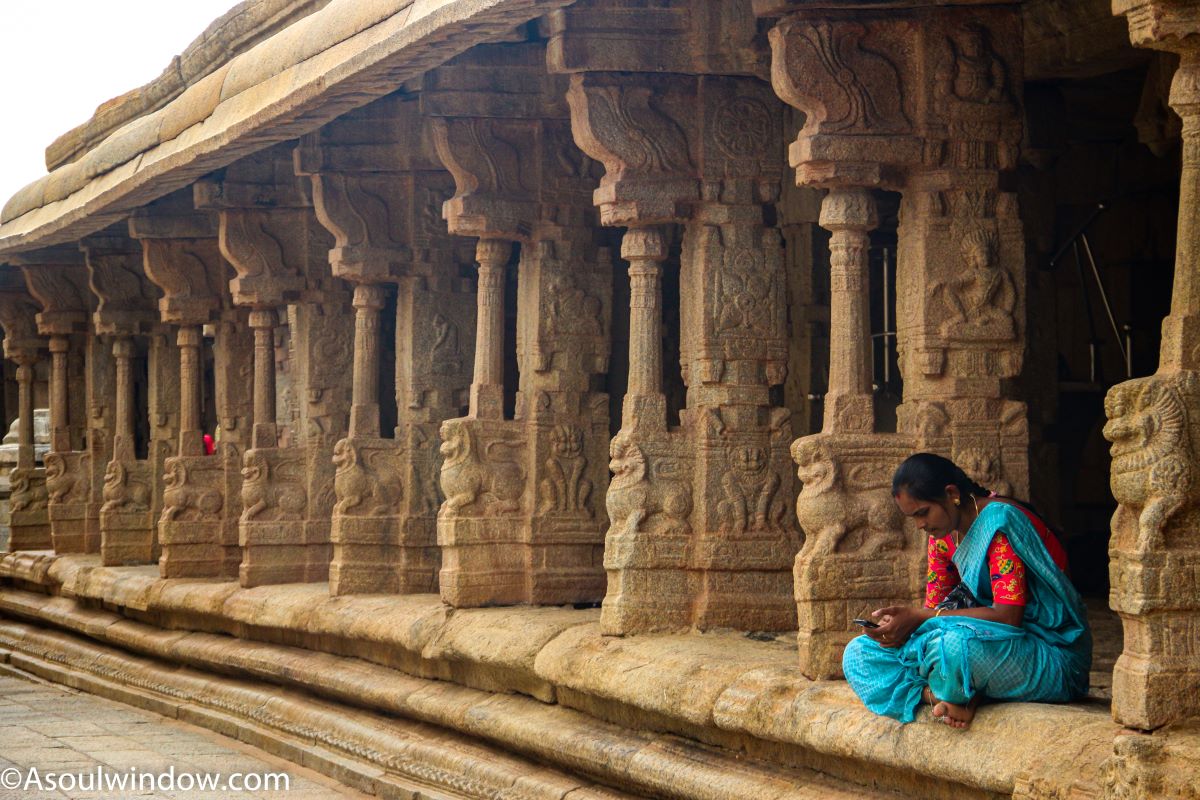
Unveiling the Mysterious Musical Pillars of Ancient Hindu Temples
Within the sacred precincts of ancient Hindu temples lie captivating secrets that have intrigued historians, architects, and music enthusiasts alike for centuries. One of these enigmatic wonders is the presence of the mystical musical pillars, a true testament to the exquisite craftsmanship and devotion of the artisans of ancient India. These pillars, carved from stone, possess an otherworldly quality: they produce melodious and resonant sounds when struck gently. As we embark on a journey through time, let us delve into the captivating world of the mysterious musical pillars of ancient Hindu temples.

Examples of such Temples with Musical Pillars:
- Meenakshi Amman Temple, Madurai, Tamil Nadu, India: One of the most famous temples with musical pillars is the Meenakshi Amman Temple in Madurai. Built during the Nayak dynasty in the 17th century, the temple features a hall called the "Thousand Pillar Mandapam," where the musical pillars are located. Each pillar produces different musical notes when struck.

- Vittala Temple, Hampi, Karnataka, India: The Vittala Temple, a UNESCO World Heritage Site in Hampi, houses another set of mesmerizing musical pillars. Dating back to the 15th century, these pillars produce melodious sounds that resemble various musical instruments when tapped. The temple's exquisite architecture and intricate carvings make it a remarkable site to explore.

- Chennakesava Temple, Belur, Karnataka, India: The Chennakesava Temple in Belur is renowned for its exceptional craftsmanship and musical pillars. Constructed during the Hoysala Empire in the 12th century, the temple boasts intricately carved pillars that produce resonant sounds. These musical marvels continue to captivate visitors with their ethereal melodies.

- Veerabhadra Temple, Lepakshi, Andhra Pradesh, India: The Veerabhadra Temple in Lepakshi features an awe-inspiring set of musical pillars. Built during the Vijayanagara Empire in the 16th century, the pillars emit musical notes that mimic the sounds of traditional Indian instruments. The temple's rich cultural heritage and architectural grandeur make it a must-visit destination for history enthusiasts.

The Intricate Architecture:
The architectural splendor of Hindu temples is renowned across the globe, showcasing a harmonious blend of artistic finesse and spiritual significance. The musical pillars, sometimes referred to as Svara Mandapams, can be found within the halls of these magnificent temples, where they stand as a testament to the mastery of ancient Indian craftsmen.
These pillars are meticulously carved from single blocks of stone, reflecting the awe-inspiring skill of the sculptors. The exquisite detailing and precision of these structures evoke a sense of reverence and wonder. Intricate carvings, depicting scenes from ancient epics and mythological tales, adorn the pillars, adding to their aesthetic grandeur.

The Magical Melody:
The true enchantment lies within the musical qualities possessed by these extraordinary pillars. When struck gently or tapped with a wooden mallet, each pillar produces a distinct musical note, echoing through the temple halls. The range of notes varies from pillar to pillar, creating a symphony of ethereal sounds.
The tones emitted by these musical pillars bear a striking resemblance to traditional Indian musical instruments, such as the veena, flute, and tabla. Each note resonates with a specific pitch, revealing an astonishing acoustic harmony. The effect is nothing short of mesmerizing, as visitors find themselves surrounded by an enchanting soundscape, transporting them to a realm of spiritual serenity.

Legends and Mystical Origins:
The origins of these musical pillars are steeped in mythology and folklore. According to ancient legends, the architects and sculptors who constructed these temples possessed divine inspiration. They were said to have communicated with celestial beings and received instructions on the sacred geometry and proportions necessary to create these melodious marvels.
One popular legend associated with these pillars is the belief that they were created to communicate with the gods. It is believed that the unique vibrations and harmonics produced by the pillars during rituals and ceremonies attracted the attention of celestial beings, thereby enhancing the spiritual connection between the mortal realm and the divine.

The Art of Sound Engineering:
The musical pillars of ancient Hindu temples were not only architectural wonders but also remarkable examples of early sound engineering. The intricate craftsmanship and scientific principles employed by the artisans in designing these pillars demonstrate a deep understanding of acoustics, resonance, and harmonic frequencies.
The placement of the pillars, the type of stone used, and the precise measurements of each pillar all contribute to the creation of their unique musical qualities. The resonance of the stone, combined with the carefully calculated dimensions, allows for the transmission and amplification of sound waves, resulting in the melodious notes that emanate from the pillars.

Preservation and Restoration Efforts:
As these ancient temples stand the test of time, the preservation and restoration of these musical pillars have become paramount. Recognizing their historical and cultural significance, efforts are being made to conserve these priceless treasures. Expert artisans and conservators work diligently to protect and restore the intricate carvings and musical qualities of these pillars.
Additionally, advanced scientific techniques and research are employed to study the acoustic properties of the pillars, unraveling the secrets of their construction and the materials used. These efforts not only ensure the survival of these remarkable artifacts but also allow future generations to marvel at the artistic and scientific achievements of our ancestors.

Notable people in this field:
Praveen Mohan, an Indian author, historian, and explorer, has played a significant role in bringing worldwide attention to the mystical musical pillars of ancient Hindu temples. Through his extensive research and documentation, Mohan has shed light on the extraordinary architectural and acoustic qualities of these pillars.
Mohan's explorations have taken him to various temples across India, where he has meticulously studied and documented the enigmatic musical pillars. Through his YouTube channel and website, he shares his findings and experiences, captivating audiences with the wonders of these ancient structures. Mohan's work has garnered a significant following and has helped raise awareness about the cultural and historical significance of these temples.

Adam Hardy, an architectural historian and professor, has extensively studied the ancient temples of South India, including those with musical pillars. His research focuses on the architectural techniques and cultural contexts of these temples. Through his publications and lectures, Hardy has raised awareness about the architectural marvels of the region and their musical heritage.
George Michell, a renowned architectural historian and author, has dedicated much of his career to studying Indian temple architecture. His works, such as "The Hindu Temple: An Introduction to Its Meaning and Forms," delve into the intricacies of temple design and symbolism. Michell's research and publications have played a crucial role in introducing Indian temple architecture, including the musical pillars, to a global audience.

Stella Kramrisch, an art historian and curator, made significant contributions to the understanding and appreciation of Indian art and architecture. Her book, "The Hindu Temple," explores the symbolism and architectural elements of Hindu temples, including their musical pillars. Kramrisch's research and expertise have been instrumental in showcasing the cultural and artistic significance of these temples.
N. Ramachandran, an archaeologist and scholar, has extensively studied the temples of South India, particularly those in Tamil Nadu. His research includes an in-depth examination of the musical pillars and their acoustic properties. Through his publications and lectures, Ramachandran has highlighted the architectural and cultural significance of these temples to a broader audience.

Prasanna Kumar Acharya, an expert in ancient Indian temple architecture, has made notable contributions to the understanding of musical pillars. With his deep knowledge of Sanskrit texts and temple rituals, he has shed light on the symbolism and significance of these pillars within the context of Hindu worship. Acharya's research has helped bridge the gap between ancient texts and architectural practices.
Conclusion
The mysterious musical pillars of ancient Hindu temples stand as a testament to the remarkable artistic and scientific achievements of ancient Indian civilization. These architectural marvels, with their ethereal melodies and intricate carvings, continue to captivate and inspire visitors from around the world. As we contemplate the enigma of these musical pillars, we are reminded of the ingenuity and devotion of the artisans who created them, leaving an indelible mark on history and a harmonious bridge between the mortal and divine realms.

By Manshi Singh
(The images used in this blog post are not owned by Anime Devta, they are just to help the readers)

